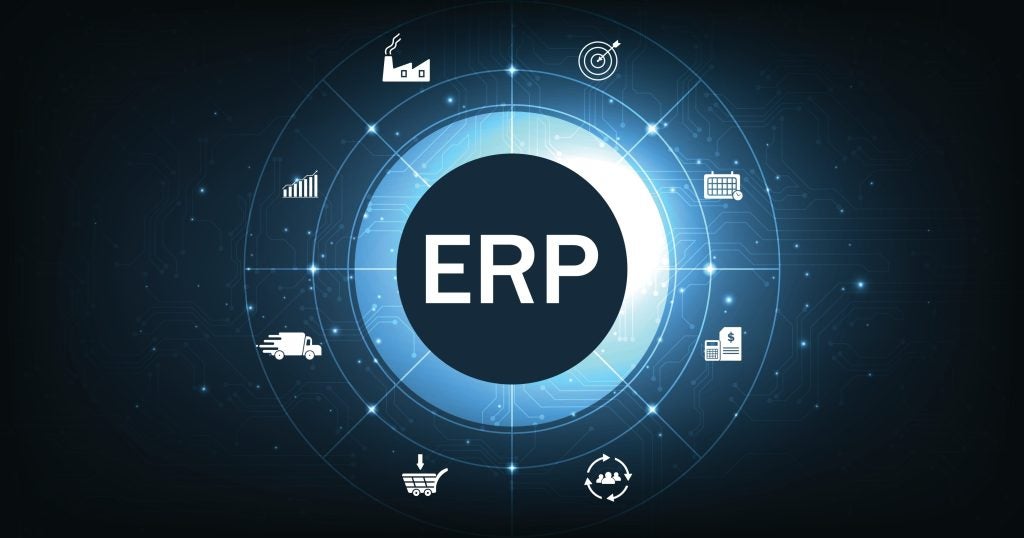
A validated process is a process that enables consistent manufacturing and packaging of products in accordance with the product and market requirements, in a cost-effective and secure manner. Since consistency and cost-effectiveness are, without doubt, key business considerations, a validation activity should be seen not as a regulatory requirement but as a business necessity.
To achieve the ultimate goal of manufacturing a packaging product perfectly every time, equipment engineers, packaging technologists and quality teams must plan and work through a validation programme together to create a robust operation. As with any other multidisciplinary project, they will need to plan their work (objectives, timescales, deliverables, roles and responsibilities, and key milestones) and report their findings.
The primary objective of a validation should thus be the establishment of an efficient process with minimum downtime, rejects and errors.
Several requirements
Packaging has been defined as ‘the art, science and technology of preparing goods for sale in a cost-effective manner’. When considering what is meant by ‘preparing goods for sale’, it must be remembered that pharmaceutical packaging must:
- Preserve the product from degradation or contamination
- Contain the product to avoid leakage
- Identify the product by providing traceability and information regarding expiry date and so on
- Provide security against tampering and counterfeiting
- Provide information on use – an ‘aide memoir’ for compliance
- Offer convenience of use for medical staff or patients
- Provide a marketing tool, supporting features and/or graphics appropriate to the sales medium
All this must be ensured for the life of the product and achieved in a complex regulatory environment. The latter extends beyond the pharmaceutical company packaging lines to the warehousing and distribution of packaged goods and to the manufacture of packaging components and the supply of raw materials.
There are several key factors that affect the robustness of a packaging process and that should be considered in validation, namely:
See Also:
- Packaging materials
- Packaging equipment
- Line layout
- Operator training
- Standard operating procedures (SOPs)
Materials
In 2000–01, 42 per cent of the defects reported by the Medicines and Healthcare products Regulatory Agency (MHRA) were related to printed packaging components – either because they were incorrectly printed or because the wrong components were used within the pack.
How well do you really know your competitors?
Access the most comprehensive Company Profiles on the market, powered by GlobalData. Save hours of research. Gain competitive edge.

Thank you!
Your download email will arrive shortly
Not ready to buy yet? Download a free sample
We are confident about the unique quality of our Company Profiles. However, we want you to make the most beneficial decision for your business, so we offer a free sample that you can download by submitting the below form
By GlobalDataTo minimise the risk of a defective product reaching the patient it is therefore vital that there is strict procedural control of artwork development, review and approval, and of the handling of printed components – from printer to packaging line.
A good relationship with suppliers is essential, together with rigorous packaging material specifications. The packaging design needs to be carried out by personnel who know how the materials are manufactured and understand what is required for production lines to operate effectively and efficiently.
For most packaging materials, pharmaceuticals represent a very small market segment. With their long production runs, packaging materials suppliers may be under significant commercial pressure from larger customers with regard to specification.
In a good relationship, the supplier will have been made aware of the implications of such changes for the packaging line, and technical personnel from both companies should be able to work together to address the problem.
An efficient production line needs consistent materials, and the storage and handling of components is as vital in this respect as their specification. For example, fibre-based materials such as leaflets (inserts), cartons and labels can be adversely affected by changes in temperature and relative humidity.
Equipment
The design and layout of the equipment have a major impact on the efficiency of the packaging line. Well-designed equipment will lend itself to efficient production of a consistent standard, whereas older equipment can often be inflexible and may have elements of poor design, such as areas where packaging components or products may be trapped.
These ‘traps’ can result in products being incorrectly packed; for example, a carton may contain the wrong leaflet or a product from a different batch. This represents a significant risk to the patient and is one of the major reasons for product recall in the industry. The greater the number of stages there are in a packaging line, the lower its efficiency will be.
With modern order patterns of short runs it may be better to have two slow-speed fillers feeding a single cartoner rather than single high-speed filler. Appropriate validation of the packaging lines will challenge the robustness of the packaging operation, thus establishing the conditions under which efficiency is maximised.
Line layout and operating procedures
Design considerations for a line layout should include the ability to: manage quick changeover, perform line clearance between batches of product and clean the line in an easy and controlled manner.
A typical packaging line will consist of several feeders for packaging components and products. Devices will normally be located in critical positions on the line to detect presence of the materials. For example, a device installed on the carton feeder will ensure that a carton is supplied for each product or tray of product, and a barcode reader will verify that it is the correct one.
A checkweigher will ensure that under- or overfilled bottles are identified and ensures, via the reject device, that they are excluded from the batch. The layout of the equipment should ensure that easy access is provided for operators and the engineers to access this equipment when adjustments and/or
maintenance are required.
To manage a packaging line, adequate SOPs will be required. It is vital that there are clear and unambiguous instructions on how to operate, adjust and maintain each piece of equipment.
In addition, there will be procedures to detail how a batch is packaged; SOPs usually explain how each material is received on the line and checked for correctness, quantity and so on. Details of in-process control (IPC) tests will be given in these SOPs.
Involving the line operators in the development of SOPs will result in documents that more accurately reflect what is actually happening on a day-to-day basis. Operators will also take ownership of the SOPs, ensuring better compliance and hence less problems on the line.
Planning
Any validation exercise must start with a detailed validation master plan (VMP). A VMP will normally include the company validation policy, explaining how the company will manage the validation exercise, and details of the organisational structure relevant to the validation activities. It should also include a summary of the facilities, systems, equipment and processes, which are to be validated and indicate the format that is to be used for documentation.
All critical equipment and systems must be identified and listed in the VMP. A high-level plan of activities should be developed and broken down into stages in a schedule. Any validation activity is only as good as the change control process used; the VMP should include details of how any changes will be managed. Finally, a list of references to any other relevant documentation should be included.
Validation protocols
Any validation activity will generate a mountain of documentation, which will include validation protocols, test results, calibration records, change control documents and the validation report itself. Validation protocols should be designed to test all the critical steps in the process. They provide a list of tests to be performed and the acceptance limits for each test.
The tests must demonstrate that the system is able to do what is expected within the operating range required for the process. It is also important, however, to test the system beyond the normal operating range to provide information on the system behaviour, which can be used to finalise operational limits.
A traditional approach to validation is to prepare test protocols for design qualification (DQ), installation qualification (IQ), operational qualification (OQ) and performance qualification (PQ). Information gathered from each of these stages must be fed into the next to ensure that the system is adequately tested.
Protocols should test each piece of equipment or step in the process, but it is also important to have one overall protocol to test the interaction between different pieces of equipment and/or systems.
DQ protocols should be designed to test the conformance of the system to the original design (user requirements) and the GMP requirements. Any potential shortfall of the system with respect to the current GMP requirements should be assessed. It is important to test the equipment adequately; for example, it is critical to run printed components down the line, as plain components display different characteristics. It is therefore recommended that such tests are included in the factory acceptance tests.
IQ protocols should consist of checklists to ensure that the system or equipment is properly installed. At this stage, engineering drawings should be checked and updated as appropriate.
OQ protocols will challenge the system to demonstrate that it can operate within the specified parameters. Tests should be developed based on the knowledge of the process and the systems, ensuring that the upper and lower operating limits are challenged.
Equipment calibration should be performed at this stage, and the frequency of in-process control (IPC) checks should be established. The line operating procedures should be finalised and operator training should be completed. The issue of procedures and assessment of operator competency with respect to the SOPs should be listed as key deliverables on the OQ protocol.
PQ protocols will be the last stage in any validation activity and should reflect the ‘real’ production environment, using production materials in a normal daily operation. The PQ exercise should extend over a time period sufficient to ensure that shift working patterns and normal lunch breaks, for example, are included, and to ensure that the systems are challenged for stop/start, batch changes and so on.
This approach may create problems for the quality assurance (QA) groups if they are required to release batches prior to the issue of the final validation report. The need for the PQ and its extent should therefore be evaluated when developing the VMP, and the rationale for the acceptance of the validation must be documented in the VMP prior to start-up of the validation activity.
It is worthwhile to look for opportunities in the early production schedules to organise a matrix of PQ tests so as to speed up the collection of data whilst ensuring that all aspects of the system have been challenged and tested.
Achieving compliance
The final validation report should include all the test results together with details of any changes made to the system. If there are test failures, these must all be reported and the resulting actions detailed. Any learning points from the activity should be logged, and recommendations for future improvements documented.
It is important to include a recommendation on the timescale for review of the system validation. The validation report must be reviewed and approved by QA. Some hints and tips that can facilitate the process are:
Spend as much time as is necessary to understand the system and its critical steps. The more time you spend in design of the protocols, the less you will waste in resolving issues and investigating failures.
Ensure that you develop a good, sound sampling plan so that your IPC tests are meaningful and provide you with useful data on the line performance. Have a procedure in place to ensure that all the IPC data is routinely reviewed and assessed by knowledgeable people.
Device challenges will provide more information if performed before and after stoppages.
Any validated system is as good as the associated change control process; thus, make sure that all changes are fully assessed and documented before any changes are actually made.
The pharmaceutical industry is constantly challenged to reduce costs, whilst new markets and new packaging solutions add complexity to the operation and an ever-changing regulatory environment demands compliance. To ensure packaging integrity, complexity must be managed, efficiency maximised and costs minimised. Normally, if business needs are correctly addressed and validation is well planned and documented, GMP compliance will naturally follow.
Author
Dr Afshin Hosseiny is a director of quality in the global quality assurance division at GlaxoSmithKline. He is a qualified person (QP) via permanent provisions, and in a career spanning more than 18 years, he has gained experience of the QP role in support of manufacturing, warehousing and distribution. Dr Hosseiny has detailed working knowledge of European and FDA validation requirements and extensive first-hand knowledge of preparation for and fronting of regulatory inspections. For further information, please contact Hosseiny on: afshin@tabrizconsulting.co.uk.





